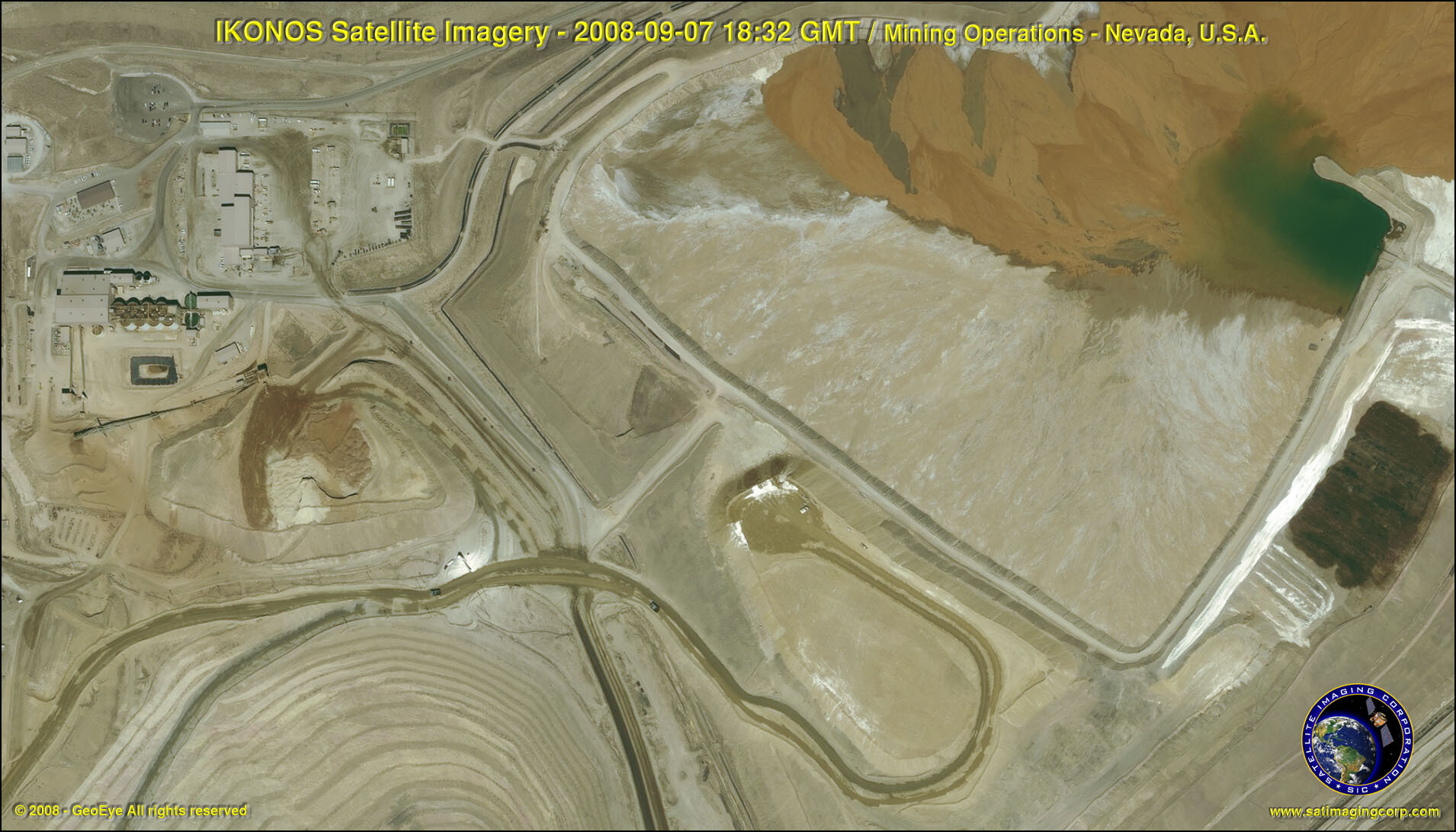Satellite Maps for Mineral Mapping
Satellite remote sensing has been a standard first step for the mineral and petroleum exploration industry. Satellite imagery has benefited geologists, scientists, and exploration managers in earth sciences due to the advantage of large-scale mapping and the satellite sensors containing multiple band colors which allows them to interpret wavelengths that cannot be seen by the human eye, such as near-infrared, short wave infrared and thermal infrared to identify the difference in structural features of the earth’s surface.
IKONOS Satellite Image Mining Operations Nevada, USA (0.8m)
Image copyright © MAXAR – All rights reserved.
The use of satellite imagery in mineral exploration, generally a combination of panchromatic and multispectral image data has been used in mineral and petroleum industries over the last decade. With higher resolution satellite sensors increasing over the last decade such as GeoEye-1 (0.41m) and WorldView-2 (0.46m) both providing panchromatic and multispectral full-color imagery that is used to utilize enhanced spectral analysis for mapping, monitoring, and analyzing landcover classification and extraction of culture data, normalized difference vegetation index (NDVI) classification and mapping, lithological classification, change detection, environmental monitoring, development, land-use planning, visualization and simulation environments such as digital elevation models (DEMs) and 3d terrain modeling.
ASTER Satellite Image Escondida Mine, Chile – Natural color (15m)
ASTER Satellite Image of Escondida open-pit mine in Atacama Desert, Chile (15m)
Image credit: NASA
Geologists and Geoscientists have used satellite images to serve as databases from which they can do the following:
- Pick out rock units (stratigraphy)
- Study the expression and modes of the origin of landforms (geomorphology)
- Determine the structural arrangements of disturbed strata (folds and faults)
- Evaluate dynamic changes from natural events (e.g., floods; volcanic eruptions)
- Seek surface clues (such as alteration and other signs of mineralization) to subsurface deposits of ore minerals, oil and gas, and groundwater.
- Function as a visual base on which a geologic map is drawn either directly or on a transparent overlay.
ASTER Satellite Image of Argyle Diamond Mine, Australia- DEM
Image credit: NASA
A well-collated and structured database integrated into a powerful GIS project can be used to collect and create valuable data for the planning and exploration program for:
- The advantage of creating large-scale area maps allows them to examine in single scenes or in mosaics the geological portrayal of Earth on a regional basis.
- The ability to analyze multispectral bands quantitatively in terms of numbers permits them to apply special image processing techniques to discern and enhance certain compositional properties of Earth materials.
- The capability of merging different types of remote sensing products (e.g., reflectance images with radar or with thermal imagery) or combining these with topographic elevation data (DEMs) and with other kinds of information bases (e.g., thematic maps; geophysical measurements, and chemical sampling surveys) enables views of existing or planning of proposed mines.
- Mapping subregional surface geology.
- Creating field exploration maps with detailed views of access roads.



